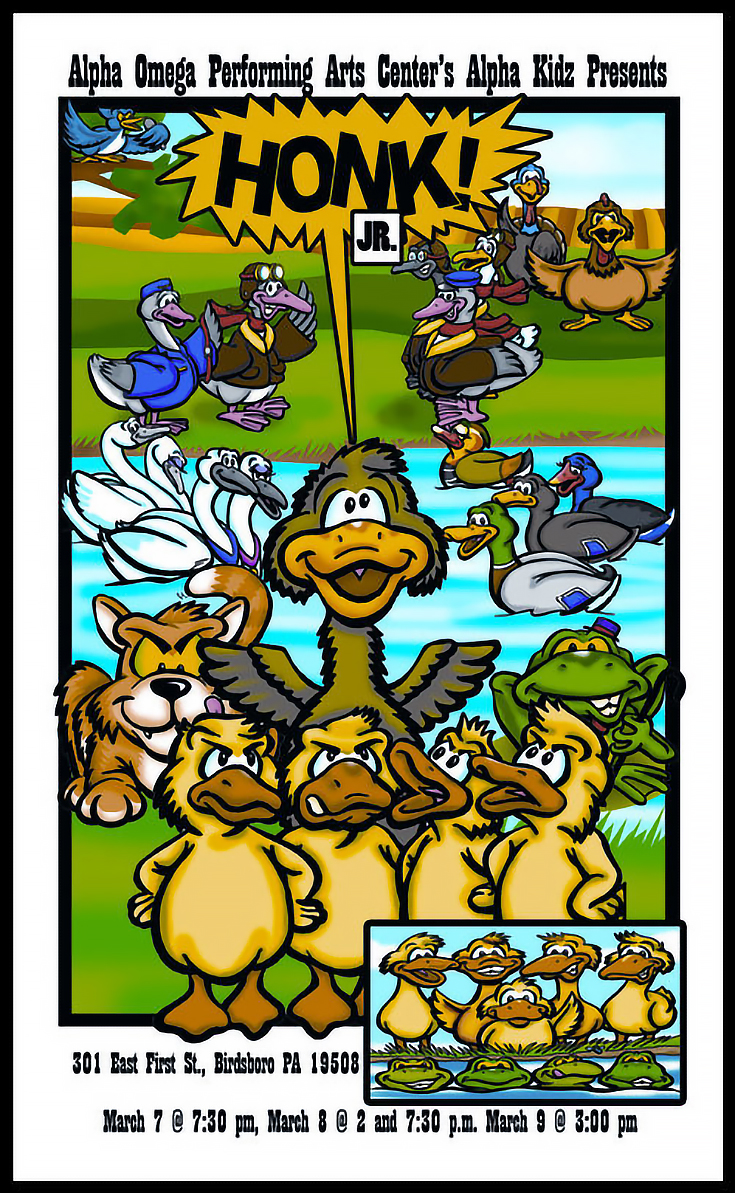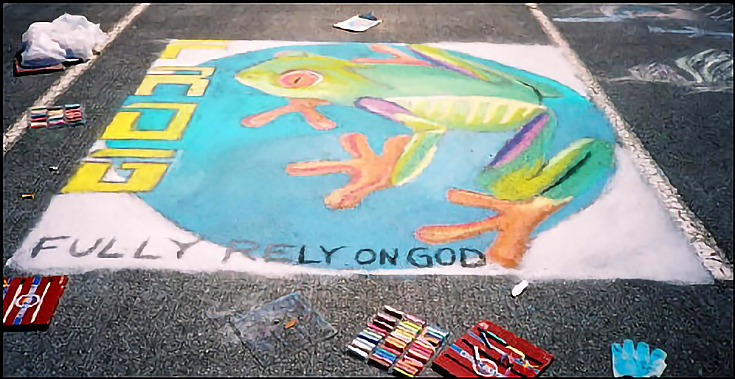 David Weiss created his first piece of art at the age of three, when he drew Tippy the Turtle from an art school’s newspaper advertisement. But despite that early inclination, it wasn’t until 1986 that he became a professional artist.
David Weiss created his first piece of art at the age of three, when he drew Tippy the Turtle from an art school’s newspaper advertisement. But despite that early inclination, it wasn’t until 1986 that he became a professional artist.
Now he holds three jobs. . . he is a graphic designer and pastor by day, and a painter by night.
In this interview, David shows us how to balance our personal beliefs with our love of creating art .
Alyice: What prompted you to start creating the type of art you create today?
David: That’s a long story but I’ll try to make it short. In the beginning of my career I was obsessed with becoming a famous artist, to the point that everything else was suffering.
I realized art had become an idol in my life, so I made one of the most painful decisions I have ever made. I quit creating art. I laid it down and told God that I would only pick it up again if I was creating it for Him.
About that time I received a call to ministry. As I began working with the youth in my church, I realized I needed a way to make my teaching stick, but wasn’t sure what it was.
Then one night, at vacation Bible School, I heard a verse from 1 Peter 4:10 which reads, “Each one should use whatever gifts he has received to serve others,” and everything clicked. All of the sudden I had all these ideas rolling through my head, all these ways to use art in ministry and A.M.O.K. was born.
Alyice: What does A.M.O.K. stand for?
David: It stands for Arts Ministry Outreach for the Kingdom. From the first days of A.M.O.K., the idea was to create a group for artists of all disciplines. It would be a community of artists that would gather to do exhibitions and performances in the local community; exhibitions and performances that would share the Gospel of God with the audience.
Alyice: Aside from using your art to teach the gospel of God, what does your art ministry do?
David: Through the ministry I create art videos for YouTube with a Gospel message attached. I host workshops and seminars to show people in the church how to find and use their God-given gifts. And I create a video blog and newsletter for artists who want to use their artistic gifts to serve others.
I am also a firm believer in going beyond the walls of the church and using what I have to help and serve those outside the church. One of the main manifestations of this so far has been my work with a local community theater, Alpha Omega Players, where I do all kinds of design work.
I paint nearly every week in the church that I pastor. It’s really fun and challenging to try to come up with a piece I can fully finish in 20 minutes or less. Strangely enough it has really stretched me artistically.
Alyice: I read on your blog that one of the things your ministry does is challenge Christian artists to find ways to create art that is not overtly Christian? Can you tell us more about your philosophy on this?
David: First let me say I’m not opposed to doing overtly Christian work and I do a lot of it. I always try to follow the Spirit and encourage all the artists I work with to do the same. That being said, when I work in public I try to do images that are not overtly Christian because I want the work to make people ask questions and inspire conversation.
I find that I really don’t do a lot of art for art’s sake anymore. The motivation for what I do is to draw people a little closer to God. If an image of Jesus is going to be a barrier to conversation with someone who does not yet believe, I’d just as soon do a less threatening image that gives me the opportunity to share what Jesus has done for me; the Jesus who loved me enough to meet me right where I was in the midst of all my mess.
As Eric Samuel Timm says, “I’m trying to repaint Jesus. I don’t want them to see an image that reminds them of some high and mighty religious person who turned them off.” I want them to see Him as He is and a lot of times that works best in a conversation.
Alyice: Aside from your art ministry, you’re also a full-time illustrator and a designer for a non-profit organization, and a freelancer. How do you make sure that your love of sharing the gospel doesn’t interfere with the needs of your employer or the needs of your freelance clients?
David: I basically try to remember that at this point my job finances my ministry, not to mention the needs of my family. When I am there I need to be faithful there. Whether it’s freelance or as an employee, I need to meet the client’s needs.
Alyice: When working with a new client, how do you make sure you’re on the right track?
David: Because of the busyness of my life, I don’t spend a lot of time pursuing new clients. The ones I do work with, however, are already familiar with what I do.
Once I get a new client, I talk about their needs, work up some sketches, and create really simple mockups to make sure I am headed in the right direction. Once I get the okay, we go from there. It is better to have the piece changed in the planning stages than redoing a completed piece of work.
Alyice: What is your process like once you get the okay to begin work on a design?
David: I’ll give you two examples. Right now I am working on the stage set for my denomination’s District Conference. The conference moderator approached me with the theme for the year. The theme is “The Saving Gospel and the Serving Gospel, Perfect Together.”
The first step in this case was to come up with the conference logo. As we discussed the theme, I got this idea of two roads coming together and forming a highway. He liked the idea and so the logo began.
From there I got the idea of road signs. These road signs became the set. As each person gives their report, one of the road signs will be stripped away until a new image is revealed. I made an image of Christ out of the road signs, revealing the ultimate truth. When the saving Gospel and the Serving Gospel work together, they reveal Jesus.
So that the planning committee would really get the concept, I built a scaled-down model. Once the committee sees the model, we can go from there.
Similarly, I am about to set out on a new project designing a set for a production of Disney’s The Jungle Book Kids. At this point the director and I are kicking around set ideas, and soon I will bring my sketchbook in with some sketches. He’ll look at them, and fine-tune the sketches; probably bringing me back to budgetary reality, and then we will begin the design stage.
For this project, I not only have to come up with something I can do, but something my team of volunteers can do. I will have a team of volunteers who will be helping me carry out the plans so I have to be more detailed so they can look at the plans and see clearly what needs to be done.
Alyice: How do you know when a design is done and ready to show a client?
David: With much of what I’ve been doing lately the client has been seeing it all along. As far as when I know it’s done, it’s done when I start to tweak it too much. There comes a point in every design where doing anything else is just going to wreck it. I try to put it away and not look at it again at a certain point before I begin to nitpick.
Alyice: Are there any tools you feel a designer should not be without?
David: This really depends on the designer. I personally would be lost without my iMac and scanner. I use it for everything from coloring cartoons to editing my videos. I set type with it, make letter stencils, scale my designs, do all my research, etc. It is also the tool I use to broadcast all my stuff to the world. I am so thankful to live in this age. Of course I know not everyone can afford one of these, but I can’t imagine doing what I do without it.
On a much simpler note, every artist should have a sketchbook. I used to have sketches flying all over the house and was never able to find them when I was looking for them. Now, I fill two or three 100 page books a year and it’s been great. I always have one with me, and I have a shelf in my studio where they all sit, waiting to be called upon again.
Alyice: Can you tell us what makes a great design?
David: A great design tells a great story. It can stand alone, without words, and everyone will get what it’s saying. So many people want their art to be mysterious and deep. We artists whine and cry about always being misunderstood and yet we take pride in creating work that’s hard to understand.
Maybe it’s because so much of what I have done is about message, but that’s just not where it is for me. I want people to look at my work and get it. I don’t want them to have to spend a lot of time wondering what I am trying to say, unless my intent is to be right there to explain it.
Alyice: Any last minute word of advice for our readers?
David: If I could add one thing to all the artists that might read this, it would be this: Be there. Don’t get so caught up in your work that you miss out on all the great things God has given you.
We artists tend to be visionaries and that’s great except for the fact that we spend so much time looking forward that we spend very little time looking around.
I am an artist and I love what I do, but I also love my family and my church and my God. I need to spend time with everyone I love or art will leave its rightful place in my life and become an idol. Be careful and do all you do to the glory of God.
To learn more about David Weiss and his work, please visit AMOKarts.com
This post may contain affiliate links.


